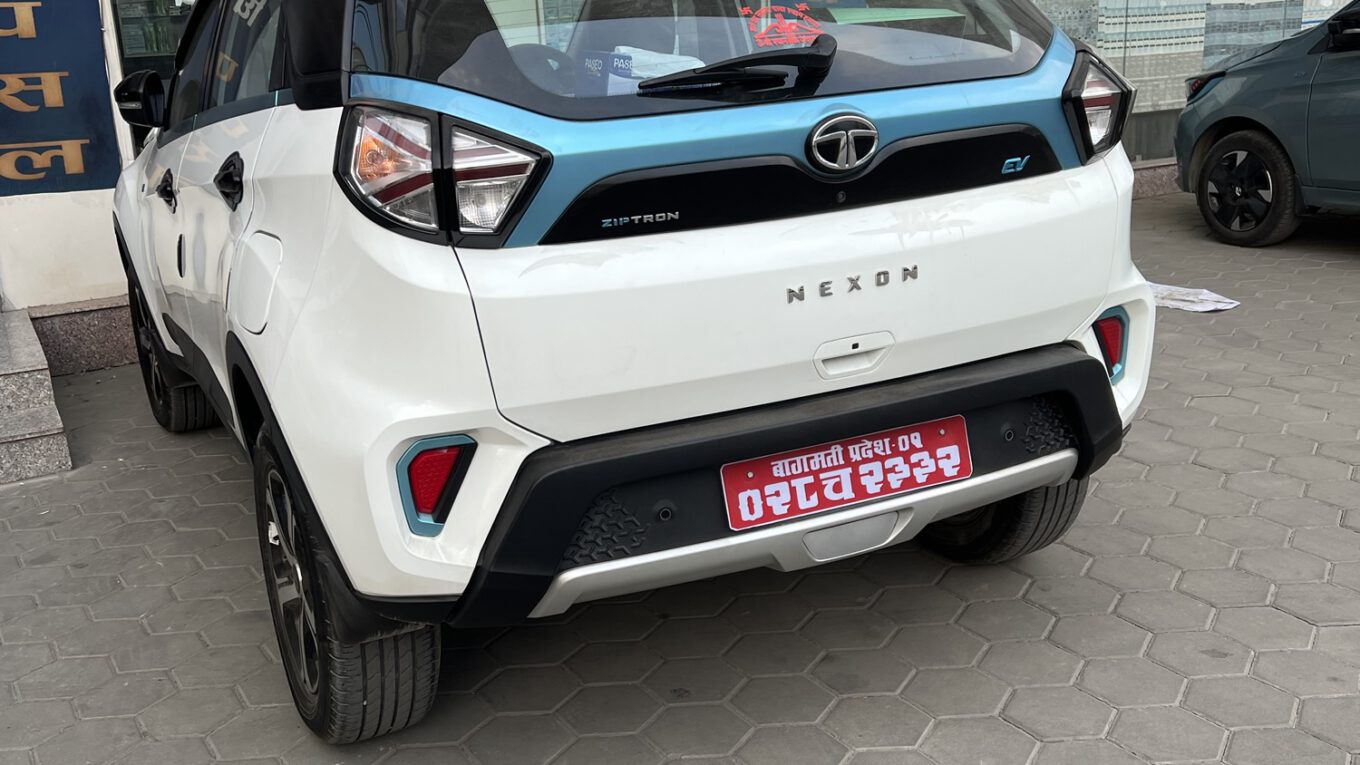Feinstaub und Grippe – oder: Wie ich lernte, den Smog zu lieben
Morgens schaue ich gerne von der Terrasse meines kleinen Hauses im Norden von Kathmandu in Richtung Südwesten. Wenn ich die Bergketten sehe, weiß ich: Alles gut. Die Luft ist klar, mein Herz ist leicht, der Tee schmeckt besser. Wenn ich sie nicht sehe – so wie seit Tagen – weiß ich auch: Alles klar. Nur eben im wörtlichen Sinne nicht.
Statt majestätischer Himalaya-Silhouetten sehe ich nur ein tristes Grau, das sich zwischen Himmel und Erde quetscht. Wie ein vergessener Vorhang aus einem verrauchten Wirtshaus. Passend dazu die Nachrichtenlage: Freunde und Freundinnen sagen geplante Unternehmungen ab. Fieber, Husten, Heiserkeit, Schnupfen, Kopfschmerzen. Das übliche Grippebuffet, jetzt auch in Kathmandu. Mich hat’s letzte Woche erwischt – und zwei Tage später auch Hishsi. Familienfreundlich, dieser Virus.
Natürlich fragt man sich gleich: Woher kommt das alles? Wer ist schuld? Und wie so oft finden wir schnell: den Feinstaub.
Als geborener Westeuropäer fällt mir als Erstes der Verkehr ein. Tausende Motorräder, Roller, Autos, LKWs und Busse kämpfen sich täglich durch den Talkessel – mit dem Feingefühl eines Presslufthammers. Die Nepalesen hingegen zeigen Richtung China oder Indien: Dort sei die Quelle allen Übels. Wieder andere geben dem Staub die Schuld, den unbefestigte Straßen in wahren Sandsturm-Operetten gen Himmel schicken.
Mein Vermieter, ein Mann mit lokalem Durchblick, hörte sich meinen Husten an, nickte weise und sagte: „Feinstaub. Du solltest besser fünf bis sieben Tage drinnen bleiben.“ Ich habe mich für die realistischere Lösung entschieden: Maske auf – nicht schön, aber selten – und raus. Für meinen Schutz. Und zur Freude anderer, die keine Lust auf mein keuchendes Sopran-Solo im Supermarkt haben.
Und jetzt wird’s spannend. Denn natürlich hat man als Mitteleuropäer sofort ein Bild vor Augen: armes Land, uralte Dieselstinker, Umwelt gleich null. Doch halt! Mein Vermieter, der sich über die Luft beschwert, fährt nicht nur ein, sondern gleich zwei Autos mit Verbrennermotor. Warum keine Elektroflitzer? „Ich bekomme für die alten Dinger keinen guten Preis“, sagt er achselzuckend. Kapitalismus, ganz simpel.
Doch der Eindruck täuscht: Gefühlt (!) fahren in Kathmandu mehr Elektroautos, -busse und -scooter als in Deutschland. Kein Scherz! Gut, China liegt gleich nebenan – und Elektrofahrzeuge sind dort so alltäglich wie Nudelsuppe. Aber viele dieser flüsterleisen Flitzer stammen nicht aus Peking, sondern aus den Werkhallen der indischen Firma Tata. Made in India, powered by Akku.
Und ja, ein weißer BMW iX1 – das Modell, das ich auch in Deutschland fahre – ist mir hier auch schon begegnet. Zweimal sogar. Ein Hauch von Heimat im Smog.
Fazit? Kathmandu ist nicht rückständig, sondern elektrisch in Bewegung. Nur eben durch dichten Staub. Und die Grippe? Die kommt und geht. Der Feinstaub bleibt.
Aber wenn ich die Berge im Südwesten wieder sehe – dann weiß ich: Die Welt da draußen existiert noch. Ich atme auf – durch meine Maske.
English version below
Fine Dust and the Flu – Or: How I Learned to Love the Smog
Most mornings, I like to stand on the terrace of my small house in northern Kathmandu and look southwest. If I can see the mountain ranges, I know: all is well. The air is clear, my heart feels light, and the tea tastes better. If I can’t see them—as has been the case for days—I also know: all is well. Just not literally.
Instead of the majestic outlines of the Himalayas, there’s only a dull gray squeezed between earth and sky—like an old curtain left behind in a smoky pub. And the news fits the mood: friends cancel plans. Fever, cough, sore throat, congestion, headaches. The full flu buffet, now in Kathmandu. It got me last week—and two days later, Hishsi too. A family-friendly virus, apparently.
Of course, the usual questions come up: Where is this coming from? Who’s to blame? And as so often, we quickly land on the culprit: fine dust.
As a born Westerner, my first thought is traffic. Thousands of motorbikes, scooters, cars, trucks, and buses grind through the valley basin every day—with all the subtlety of a jackhammer. Nepalis, on the other hand, tend to point to China or India as the source of all evil. Others blame the swirling dust from unpaved roads, whipping skyward like miniature sandstorms.
My landlord, a man with local insight, listened to my cough, nodded wisely, and said: “Fine dust. You should stay inside for five to seven days.” I opted for the more pragmatic solution: mask on—not pretty, but effective—and out the door. For my protection, and for the relief of those around me who’d rather not hear my wheezing soprano solo in the supermarket.
And now it gets interesting. As a Central European, you immediately picture a poor country, clunky old diesel engines, zero environmental awareness. But wait! The same landlord who complains about the air owns not one, but two gas-powered cars. Why no EVs? “I can’t get a good price for the old ones,” he shrugs. Capitalism, plain and simple.
But that first impression is misleading. Subjectively (!) it seems like there are more electric cars, buses, and scooters in Kathmandu than in Germany. No joke! Granted, China is just next door—and EVs are as common there as noodle soup. But many of these quiet little vehicles don’t come from Beijing, but from the workshops of India’s Tata Motors. Made in India, powered by battery.
And yes, I even spotted a white BMW iX1 here—the same model I drive back in Germany. Twice, in fact. A little whisper of home in the smog.
The takeaway? Kathmandu isn’t stuck in the past—it’s on the move electrically. Just through a layer of fine dust. And the flu? It comes and goes. The smog sticks around.
But when the mountains reappear in the southwest, I know: the world is still out there. I breathe a little easier—through my mask.
